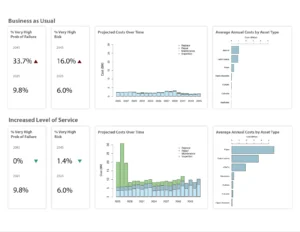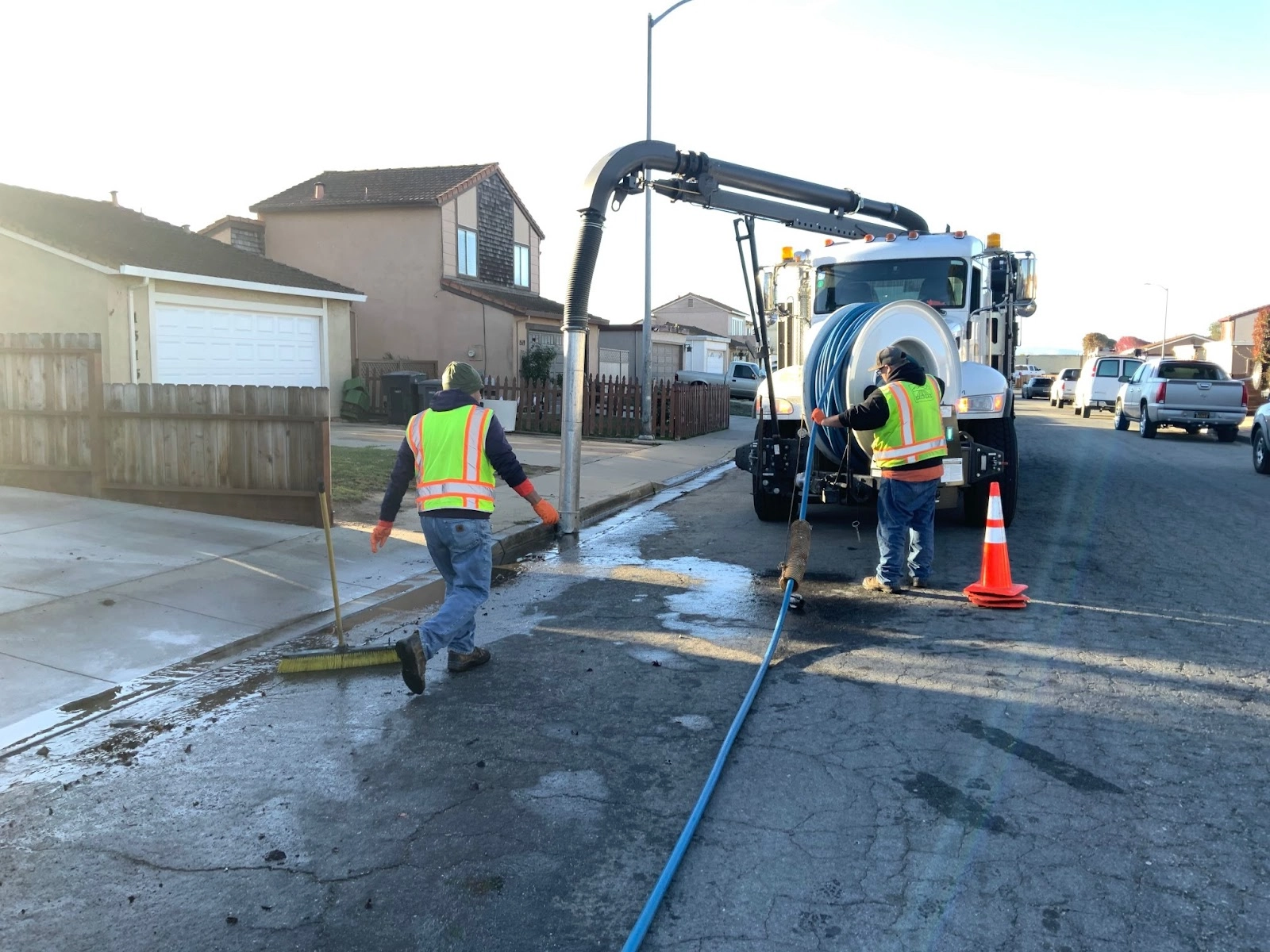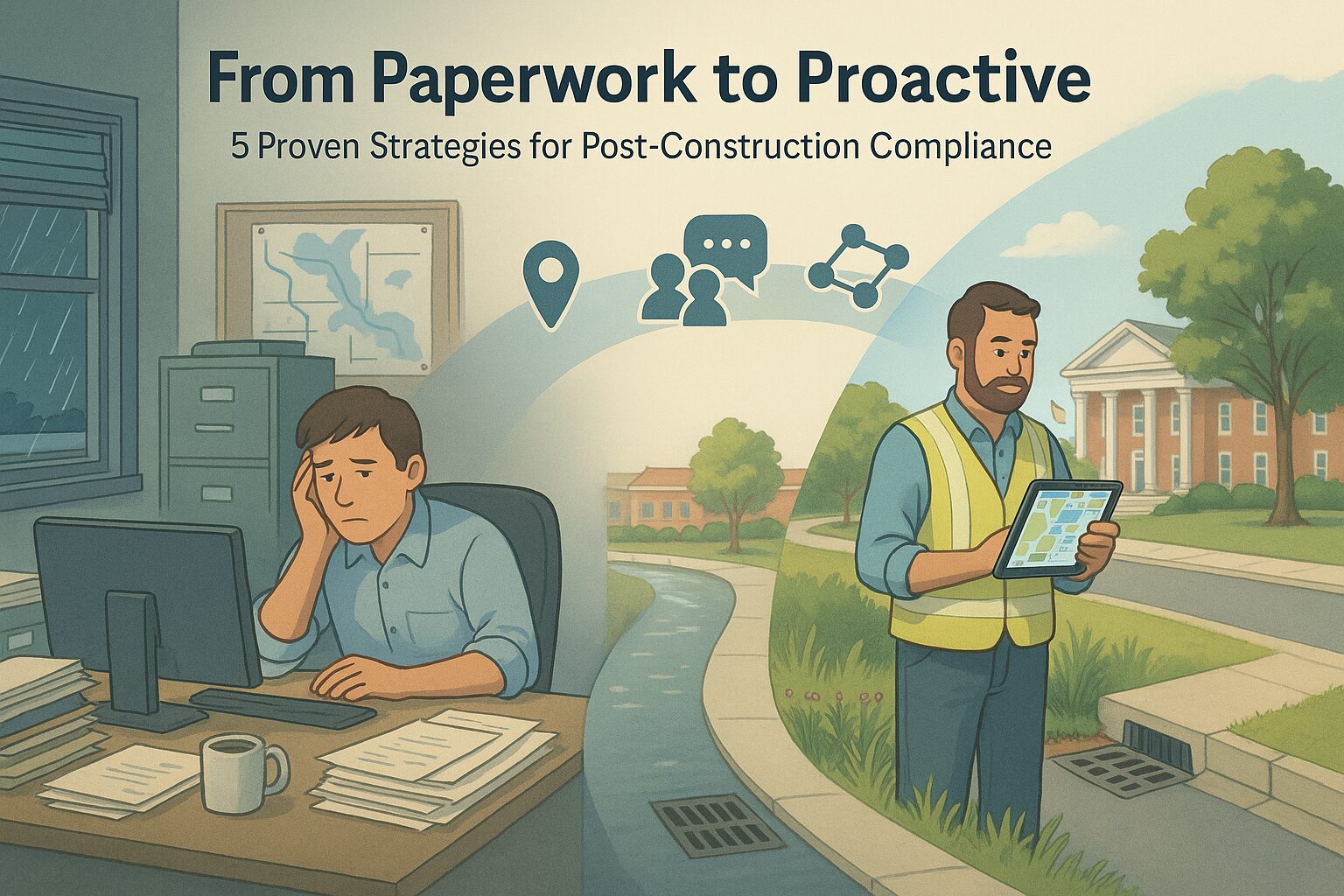Every stormwater manager knows the frustration: “We desperately need to extend the life of our existing stormwater assets,” yet critical decisions are being made with incomplete information. For municipalities across the country, aging infrastructure built decades before digital record-keeping now faces increasingly stringent NPDES permit requirements for systematic asset management.
The City of Salinas faced this exact challenge—and 2NDNATURE helped them develop a blueprint that’s transforming how municipalities approach stormwater asset management. Their journey from scattered data to strategic decision-making offers invaluable lessons for any MS4 looking to optimize their stormwater infrastructure investment.
The Modern Asset Management Dilemma
Picture this scenario: Your municipality manages an intricate network of pipes, catch basins, outfalls, structural BMPs, and manufactured physical structures that perform critical stormwater functions. Most of these assets were designed and installed well before the digital age, when record-keeping involved hand-drawn plans and filing cabinets filled with paper documents.
Now, NPDES permits increasingly require systematic management of these hard assets. You need to assess the risk from each asset failing in its function, calculate current and future costs to support and replace these long-term investments, and identify resource needs for areas that pose the greatest threat.
But here’s the problem most municipalities face: significant data gaps that prevent such calculations. As one frustrated stormwater manager put it, “We are still using clipboards and spreadsheets,” while another lamented, “Getting teams to work together is like herding cats because our information is scattered.”
This is exactly where the City of Salinas found itself just a few years ago.
The Salinas Story: From Challenge to Solution
Located on the Central Coast in Monterey County, eight miles east of the Monterey Bay National Marine Sanctuary, the City of Salinas presents a compelling case study in asset management transformation. Incorporated in 1874, Salinas began its municipal infrastructure well before the twentieth century. Today, as a Phase I MS4 with a population exceeding 150,000, the city encompasses 15,030 acres—nearly half of which is comprised of impervious surface.
Like many municipalities, Salinas faced the daunting task of managing aging infrastructure while meeting modern regulatory requirements. Their solution? Working with 2NDNATURE to develop a comprehensive Asset Improvement Plan built on core principles of asset management to optimize stormwater assets’ performance over their lifecycle.
The results speak for themselves: What was once a disparate collection of data between hard-copy plans and digital PDFs has become a powerful tool for City planners and decision-makers.

The Four Pillars for Asset Management Success
Salinas didn’t stumble into success—they followed 2NDNATURE’s systematic framework that any municipality can adapt. Here are our four proven pillars:
Pillar 1: Asset Mapping and Attribution for Risk
Salinas began with a simple idea: No more collecting data just for its own sake. Instead, 2NDNATURE collaborated with the city to identify the specific assets and attributes necessary to determine the long-term needs of the storm sewer system. The foundation of effective asset management begins with understanding the assets you have and the risks associated with each asset failing. Salinas invested significant time and resources in mapping and attributing their hard assets to ensure a comprehensive understanding of the characteristics required to determine each asset’s risk based on its probability and consequences of failure.
This wasn’t just about creating pretty maps. The city combined desktop analyses with extensive field verification to fill critical data gaps. The Stormwater Information Management System, 2NFORM, helped focus the city on the data that matters. Every catch basin, pipe segment, outfall, and structural BMP was cataloged with the detailed attributes necessary for risk assessment.
Key Insight: Mapping your storm sewer system can feel overwhelming, but strategic approaches can make the effort manageable.
Pillar 2: Establishing Needed Service Levels and Costs
2NDNATURE developed the Stormwater Asset Management Model (SAMM) to serve as a decision-making tool for Salinas. Feeding in the storm sewer system plus local costs of managing the assets, the city can explore how 20 years of asset management would impact the health of the system.
With guidance from 2NDNATURE, the city determined its current rates of maintaining, repairing, and replacing assets. They also explored several scenarios for how significant increases in these rates could mitigate the risks of the storm sewer system failing. The result? A solid foundation for planning that will allow the city to address the most critical needs.
Key Insight: Strategic O&M and asset replacement can lead to a storm sewer system that performs better and is at lower risk of expensive, catastrophic failure.
Pillar 3: Budget Gap Analysis
Armed with the results from SAMM, Salinas could summarize the short- and long-term costs for different levels of service across their entire stormwater system: business as usual, a moderate increase in O&M and asset replacement, and a high increase in those rates. They used SAMM to identify any funding gaps between their existing stormwater budget and the financial resources required to manage the storm sewer system effectively. This analysis enables the city to examine the trade-offs between safer, more effective infrastructure and the associated costs of more frequent asset maintenance.
SAMM answered the question that keeps many stormwater managers awake at night: how much money do we really need, and where should we spend it first?
Key Insight: The aging infrastructure of most cities has significant deferred maintenance needs. SAMM enables decision-making for how quickly those needs can be addressed, within real budget constraints.
Pillar 4: Strategic Funding Pursuit
With clear documentation of their needs and priorities, Salinas has now turned to identifying funding and financing to fill budget gaps over the next two decades. The city will pursue a variety of efforts, including short-term grants, long-term loans, and a stormwater utility fee, to secure stable funding for the future. The systematic approach of 2NDNATURE and Salinas provided the credible justification needed for successful discussions with city and state leaders about how to increase resources to the stormwater program.
Key Insight: Stormwater programs are underfunded for their long-term needs. SAMM can provide the evidence needed to win grants, determine financing amounts, and establish a stormwater utility fee.
Lessons Learned: What Worked and Why
Asset management success doesn’t happen overnight. Salinas’s experience offers valuable insights for other municipalities:
Technology Integration is Critical: The city’s decision to leverage 2NFORM proved essential. Rather than maintaining data in multiple disconnected systems, they created a single source of truth that served both operational needs and regulatory compliance.
Field Verification Can’t Be Skipped: While desktop analysis provided a starting point, field verification was essential for filling data gaps and ensuring accuracy. The investment in ground-truthing paid dividends in the quality of subsequent analysis.
Generic Approaches Don’t Work for Asset Management: Salinas’s emphasis on local spatial, imagery, inspection, and cost data ensured their plans reflected actual conditions rather than theoretical models.
Stakeholder Engagement Drives Success: By creating a system accessible to both program staff and regulators, Salinas eliminated the adversarial dynamic that often characterizes permit compliance.
The Transformation: Measurable Impact
The transformation in Salinas has been dramatic. City planners and decision-makers now have access to:
- Comprehensive asset inventories with risk-based prioritization
- Clear understanding of maintenance and replacement needs
- Reliable cost projections for budget planning
- Streamlined compliance reporting processes
- Data-driven justification for funding requests
Perhaps most importantly, they’ve moved from reactive crisis management to proactive strategic planning. As one team member noted, “It’s no longer hard to be proactive because we’re not always playing catch up.”
Your Next Steps
The City of Salinas proved that even municipalities with limited resources can transform their approach to stormwater asset management. 2NDNATURE’s systematic framework provides a proven blueprint that any MS4 can adapt to their specific circumstances.
The question isn’t whether you can afford to implement systematic asset management—it’s whether you can afford not to. With NPDES permits increasingly requiring systematic approaches and infrastructure continuing to age, the time to act is now.
Ready to transform your stormwater asset management from reactive crisis response to proactive strategic planning? The lessons from Salinas show it’s not only possible—it’s essential for the future of municipal stormwater management.
Learn how 2NDNATURE’s stormwater management software can help you implement a systematic approach to asset management. Our solutions integrate seamlessly with existing GIS systems and provide the centralized data management capabilities that made Salinas’s transformation possible. Request a demo today to see how we can help you move from data gaps to data-driven decisions.



